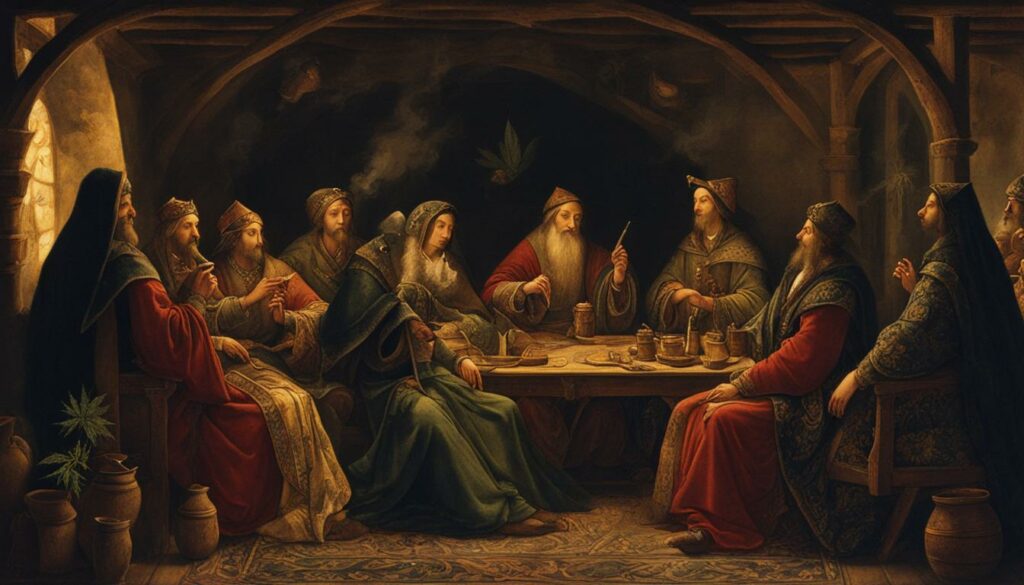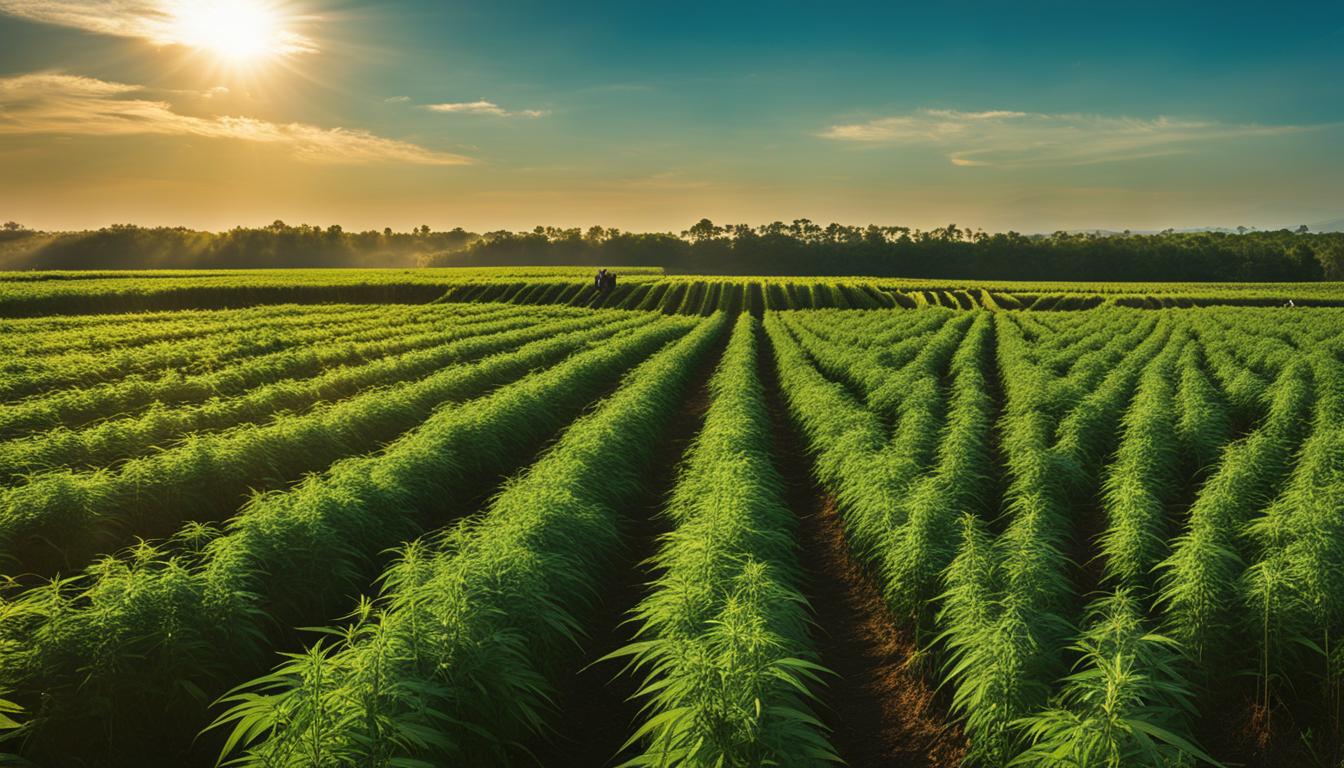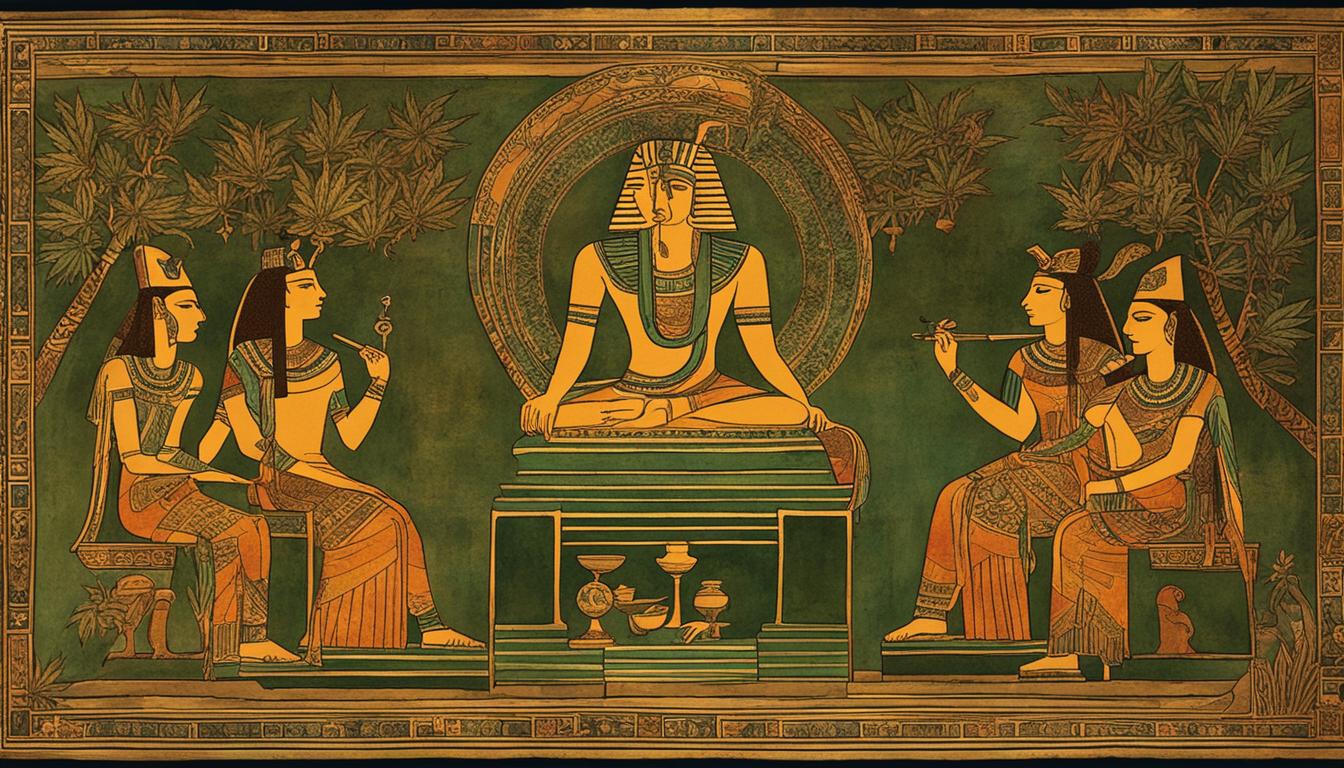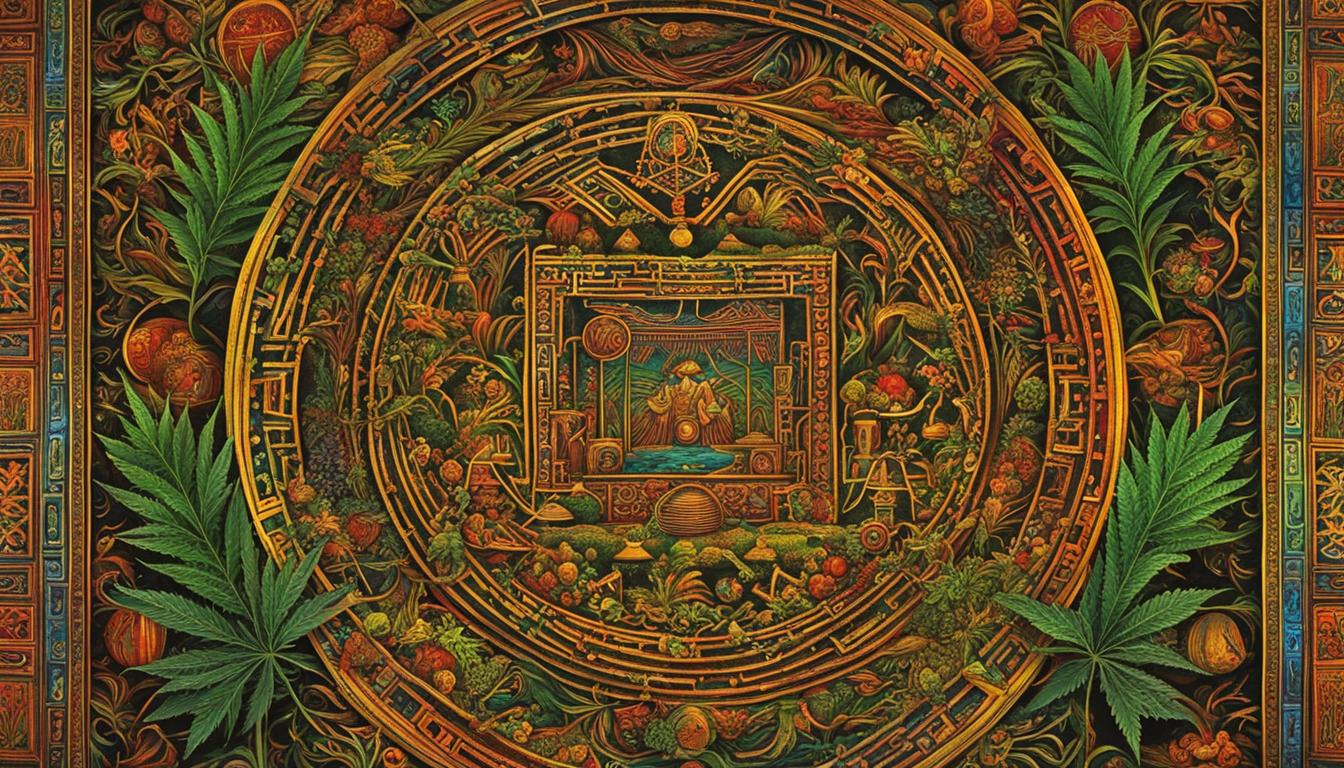How Was Cannabis Used in Medieval Europe?
Welcome to a journey through time, where we explore the fascinating history of cannabis in medieval Europe. From practical uses to its role in herbal medicine, recreational activities, and cultural significance, cannabis left an indelible mark on this era. Join us as we delve into the rich tapestry of cannabis history and discover the multifaceted ways it influenced medieval European society.
Step back in time and imagine the bustling textile industry of medieval Europe. Cannabis, known as hemp, was a vital resource for the production of clothing, sails, and ropes. Its versatility and durability made it a prized material. But cannabis’ influence in medieval Europe extends far beyond textiles.
In ancient cultures like the Romans and Germanic tribes, cannabis use dates back centuries. Even Marco Polo wrote about the Hashishins of Persia and their affinity for cannabis. In Europe, cannabis cultivation thrived in countries like Britain, where it was utilized for medicinal purposes.
When it comes to herbal medicine, cannabis played a crucial role. The Anglo-Saxons introduced cannabis to Britain during the 5th century, while Viking ships carried cannabis seeds as they sailed the seas. It was believed that cannabis possessed medicinal properties and could alleviate various ailments, such as seizures, rheumatism, and cholera.
However, cannabis wasn’t solely utilized for its medicinal benefits. It also served as a recreational substance. Ancient civilizations like India and Germany recognized cannabis for its euphoric effects. In the Arabic world, where wine was forbidden, cannabis became a popular alternative for leisure and enjoyment. The tales of the Thousand and One Nights even referred to cannabis as a “magic plant” that brought joy and brightened the spirit.
Cannabis was deeply intertwined with medieval European culture and religion. In ancient India, it was associated with the Hindu god Shiva and used in worship rituals. In pre-Christian Germany, cannabis was linked to the Norse goddess Freya, symbolizing love. The plant held similar significance in medieval Arabic and Egyptian cultures, where it was seen as a conduit for spiritual enlightenment.
In conclusion, the historical use of cannabis in medieval Europe was diverse and multifaceted. It played a pivotal role in practical industries, herbal medicine, recreation, and cultural and religious practices. The enduring relationship between humans and this captivating plant offers a glimpse into the rich tapestry of our past.
Cannabis in Medieval European Herbalism
In medieval Europe, cannabis played a significant role in herbal medicine. It was considered a valuable herb with various medicinal properties, and its use can be traced back to ancient times. The Anglo-Saxons introduced cannabis to Britain during the 5th century, and Viking ships from the 9th century have been discovered with cannabis seeds, highlighting its importance in trade and daily life.
Medieval herbalists used cannabis as a remedy for a wide range of ailments. It was believed to have analgesic and anti-inflammatory properties, making it suitable for treating conditions such as seizures, rheumatism, and cholera. The plant was often prepared as a tincture or brewed into a tea to extract its medicinal compounds. The knowledge of cannabis’ therapeutic properties was passed down through generations, and its use in herbal medicine continued until the modern era.
One example of cannabis’s importance in medieval herbalism is its inclusion in the famous herbal text “Herbarium Apuleii Platonic,” which was widely used by medieval physicians. The text describes cannabis as having the power to ease childbirth and relieve pain. It also mentions cannabis as a treatment for jaundice and depression. Such references reflect the widespread recognition of cannabis’s healing properties during this time.
Overall, cannabis played a vital role in medieval European herbalism. Its numerous medicinal benefits were well-known and utilized by herbalists of the time. The use of cannabis in herbal medicine provides fascinating insight into the historical practices of treating ailments and the enduring relationship between humans and this remarkable plant.
The Medicinal Use of Cannabis in Medieval Europe
Throughout medieval Europe, cannabis was highly valued for its medicinal properties. The plant was used as a remedy for various ailments, reflecting the belief in its therapeutic capabilities. Cannabis’s role in herbal medicine was not only practical but also deeply rooted in cultural and historical traditions. The use of cannabis in medieval Europe provides a fascinating glimpse into the ancient practices of healing and the enduring connection between humans and nature.
Cannabis as a Recreational Substance in Medieval Europe
In addition to its medicinal uses, cannabis also served as a recreational substance in medieval Europe. Its euphoric properties were recognized and sought after, leading to its widespread use as a leisure activity. This practice can be traced back to ancient civilizations like India and Germany, where cannabis was consumed for its intoxicating effects.
In the Arabic world, where the consumption of wine was forbidden due to religious reasons, cannabis emerged as a popular alternative. The tales of the Thousand and One Nights even refer to cannabis as a “magic plant” that brings joy and brightens the spirit. This reputation further fueled its recreational use, spreading throughout Europe and even reaching the Americas.
“Cannabis, the magic plant, brings joy and delight to the hearts, brightening the spirits and dispelling sorrows.” – The Thousand and One Nights
The recreational use of cannabis in medieval Europe provided people with a means of relaxation, amusement, and spiritual exploration. It was often consumed in social gatherings and celebrations, adding an element of festivity to various events. The allure of cannabis as a leisure activity extended across different social classes, encompassing both the elite and the common people.
Overall, cannabis played a significant role as a recreational substance in medieval Europe, offering individuals a way to temporarily escape the pressures and realities of daily life. Its euphoric effects and association with joy and spiritual enlightenment made it a sought-after commodity, contributing to its enduring presence in European culture.

The Role of Cannabis in Medieval European Leisure
Table: Festivals and Social Gatherings where Cannabis was Enjoyed
| Festival/Event | Description |
|---|---|
| May Day celebrations | Flower-wreathed maypoles, dancing, and cannabis-infused treats |
| Harvest festivals | Feasting, music, and cannabis consumption in celebration of a bountiful harvest |
| Medieval fairs | Entertainment, games, and the availability of cannabis-infused beverages |
| Feasts and banquets | Cannabis served alongside sumptuous meals as a form of indulgence |
- The recreational use of cannabis provided an escape from the monotony of daily life and added an element of excitement to festive occasions.
- It was particularly popular during May Day celebrations, harvest festivals, medieval fairs, and feasts.
- Cannabis-infused treats and beverages were enjoyed, enhancing the overall ambiance and contributing to a sense of merriment.
Cannabis in Medieval European Culture and Religion
The historical use of cannabis in medieval Europe extended beyond practical and medicinal purposes, penetrating the realms of culture and religion. The plant held significant symbolism and was associated with deities, rituals, and spiritual enlightenment.
In ancient India, cannabis was revered as a sacred herb and was closely connected to the Hindu god Shiva. It was used in religious ceremonies and considered a means of connecting with the divine. Similarly, in pre-Christian Germanic cultures, cannabis was linked to the Norse goddess Freya, who represented love and fertility. The plant’s association with Freya further emphasized its connection to the natural world and the cycles of life.
In medieval Arabic and Egyptian cultures, cannabis was viewed as a “magic plant” that brought joy and enlightenment. It was used in mystical practices and believed to enhance spiritual experiences. The tales of the Thousand and One Nights even mention cannabis as a means of invoking euphoria and uplifting the spirit.
“Cannabis was a powerful symbol in medieval European culture, representing the celestial and the divine. It was a conduit between the mortal world and the spiritual realm, a tool for worship and introspection.” – Scholar, Dr. Elizabeth Richardson
The use of cannabis in religious and cultural practices during medieval Europe highlights the intricate relationship between humans and this remarkable plant. Its association with gods and spiritual experiences underlines its perceived power and the reverence bestowed upon it. Cannabis played a role in shaping the cultural and spiritual landscape of the time, leaving an indelible mark on medieval European history.
Conclusion
The historical use of cannabis in medieval Europe was diverse and multi-faceted. It played a pivotal role in various aspects of society, from practical applications like textile production to its significance in herbal medicine. Cannabis was not only valued for its economic contributions but also for its recreational and cultural importance.
Throughout medieval Europe, cannabis was associated with deities and used for spiritual purposes. It had deep roots in religious practices, with ancient cultures attributing spiritual significance to the plant. Whether it was connected to Hindu gods in India or the Norse goddess Freya in Germany, cannabis held a special place in the hearts and minds of the people.
The use of cannabis in medieval Europe provides us with a glimpse into the enduring relationship between humans and this captivating plant. From its ancient origins to its widespread cultivation, cannabis has left an indelible mark on history. Its historical significance reminds us of the profound impact plants can have on societies and cultures throughout time.
FAQ
How was cannabis used in medieval Europe?
Cannabis had various uses in medieval Europe. It was widely used for textile production, including clothing, sails, and ropes. It was also cultivated and used for medicinal purposes. Additionally, cannabis was used as a recreational substance and played a significant role in the culture and religion of the time.
Did cannabis have medicinal uses in medieval Europe?
Yes, cannabis was an important herb used in herbal medicine during medieval Europe. It was believed to have various medicinal properties and was used to treat a wide range of ailments, including seizures, rheumatism, and cholera.
Was cannabis used recreationally in medieval Europe?
Yes, cannabis was used for its euphoric properties as a recreational substance in medieval Europe. Its use for recreational purposes can be traced back to ancient civilizations like India and Germany, and it spread throughout Europe and even reached the Americas.
How did cannabis play a role in the culture and religion of medieval Europe?
Cannabis was associated with deities and used in worship rituals in ancient India and pre-Christian Germany. In medieval Arabic and Egyptian cultures, it was seen as a “magic plant” that brought joy and spiritual enlightenment. The use of cannabis in religious and cultural practices was prevalent throughout the Middle Ages.
Can you summarize the historical use of cannabis in medieval Europe?
The historical use of cannabis in medieval Europe was diverse and multi-faceted. It was used for practical purposes like textile production and played a significant role in herbal medicine. Cannabis also had recreational and cultural significance, being associated with deities and used for spiritual purposes. The use of cannabis in medieval Europe provides insight into the long-standing relationship between humans and this intriguing plant.














